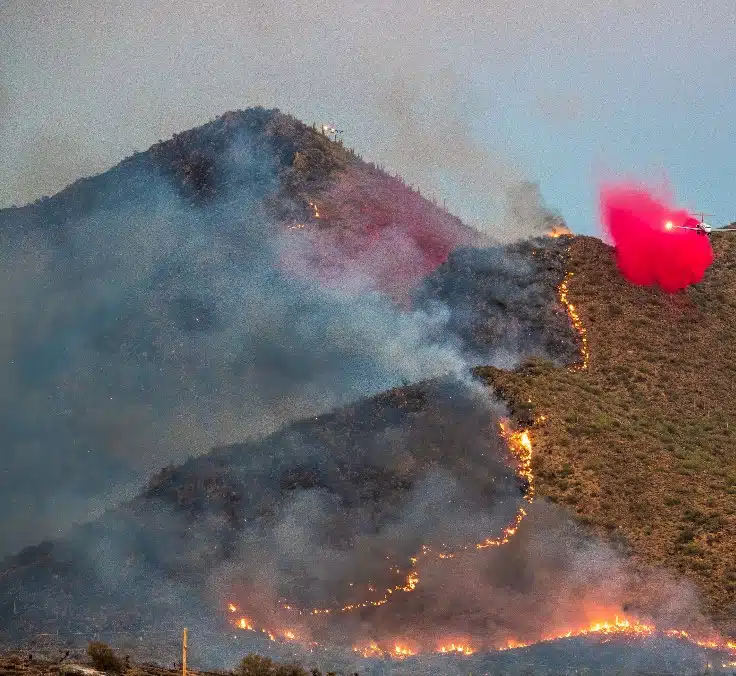INNOVATION | 10.13.2023
How the insurance industry can contribute to disaster risk reduction
The frequency and severity of natural disasters has increased in recent years due to phenomena such as climate change and population growth in regions exposed to hazards. These disasters have a significant impact on macroeconomic outcomes and affect the financial stability of countries. The insurance industry plays a leading role in helping to reduce the risk of disasters and in making the economy and society more resilient.
Natural disaster risk is one of today’s major concerns. Legislators, scientists, businesses, and society in general are constantly looking for ways to minimize this risk. Not surprisingly, disasters are on the rise: if current trends keep up, the world will experience 1.5 major disasters per day by 20301.
Climate change and related weather-related events—floods, droughts, heat/cold waves, hurricanes, extreme temperatures, etc.—are some of the main risks, although the scientific community considers that the greatest consequences will come in a few decades. But we must not overlook socio-demographic changes: as people become more concentrated in areas where there used to be far fewer people and property, and as populations grow in regions exposed to natural hazards, risk increases.
These disasters have a significant humanitarian but also macroeconomic impact, weakening the financial position of governments that have to step in to provide aid or cover losses afterward.
Hurricane Maria, which hit Puerto Rico in 2017, is a case in point. Around 3,000 people were killed, and the region’s governor had to ask the US Congress for $139 billion for recovery work. Another example of a natural disaster is the 2010 earthquake in Haiti, which killed 200,000 people and caused economic losses of around 7.8 billion dollars, according to the Haitian government2.
Disasters lead to greater social inequality and deepen existing vulnerabilities. Most countries facing high disaster risk are also among those with the highest proportion of their population living below the national poverty line. Specifically, among the 20 most vulnerable countries, 90% are low and middle income and have an average national poverty rate of 34%. This figure is lower than the 0.5% of countries at the opposite end of the risk scale3.
In this evolving context, where it is increasingly important to research and analyze these phenomena to mitigate risks, the insurance industry is facing new challenges. Accordingly, it will need not only to embrace innovative solutions and expand its offerings, but also focus on prevention services that enhance the resilience of both the economy and society.
Bridging the protection gap
In 2021, the global insurance gap reached $7 trillion or 730 basis points (bps) of global GDP, as reported in the GIP-MAPFRE 2022: Global Insurance Potential Index report, produced by MAPFRE Economics. Insurance levels in countries around the world vary greatly, and factors such as the conditions of the country concerned, the various socio-economic and population realities, or the insurance culture existing in each region come into play.
However, although it is well established that the effects of these events can be mitigated by disaster insurance—including the activity of reinsurers such as MAPFRE RE—the proportion of insured economic losses related to natural disasters is low.
According to EU figures, only a quarter of climate-related losses are insured in the region4. As the European Insurance and Occupational Pensions Authority (EIOPA) points out, “insurability and pricing of climate-related risks are increasingly critical concerns for insurers and policymakers, and if no action is taken to counteract them, the protection gap is expected to widen.” In other regions such as Latin America, where insurance penetration is lower, insured losses are also lower.
Public bodies such as the European Central Bank, EIOPA itself, the US National Association of Insurance Commissioners (NAIC), and the Brazilian National Private Insurance Council (CNSP – Consejo Nacional del Seguro Privado de Brasil) are focusing on policies to reduce the protection gap for climate-related risks. Areas such as risk awareness, risk-based incentives linked to premiums, new risk assessment standards, or greater public-private coordination are some of the ideas being discussed5.
“The insurance industry has the capacity to make the economy and society in general much more resilient, as well as to reduce disaster risk by providing the necessary support in times of vulnerability. Without insurance, getting back to business as usual or economic sustainability would not be viable,” says Juan Satrústegui, Director of Nature Risks at MAPFRE RE.
Harnessing new capacities to enhance prevention
To address this scenario, prevention is crucial.
The insurance industry is currently focusing on climate risk prediction models that incorporate the effects of climate change. Whereas until recently it was only possible to analyze historical information and previous patterns, today there are solutions available that simulate climate evolution using advanced global circulation model analysis.
These solutions can already assess future risks across various climate change scenarios and calculate the potential economic impact on assets and businesses. This capability facilitates medium- and long-term decision-making. In addition, the increasing availability of real-time local data, such as satellite imagery or connected sensors deployed on the ground, can enable precise, area-specific actions in the short term.
The new capabilities introduced by both insurtech/climatech startups and traditional risk modeling providers empower insurers to create a more comprehensive range of products and services tailored to the present circumstances. This approach will not solely focus on reacting to catastrophic events, but will also encompass prevention, anticipation, resilience, guidance, and support to businesses and individuals as they navigate the challenges of climate change and adapt to it.
“As the frequency and intensity of these extreme events increases, the need to address this challenge becomes more acute. That is why, at MAPFRE, we have been studying natural risks for years and working with insurtech startups to research cutting-edge solutions, assess risks, and help to mitigate them. All with the aim of taking care of what matters to us and having a positive impact on society and the environment,” adds the supervisor at MAPFRE RE.
References:
- ‘Global Assessment Report on Disaster Risk Reduction 2022: Our World at Risk: Transforming Governance for a Resilient Future,’ page 18. United Nations Office for Disaster Risk Reduction (2022). https://www.undrr.org/gar/gar2022-our-world-risk-gar.
- Action Plan: Earthquake in Haiti. Status report. Page 3. Spanish Red Cross. http://www.cruzroja.es/pls/portal30/docs/PAGE/CANCRE/COPY_OF_TERREMOTOHAITI66/COPY_OF_RESPUESTACRE/HAIT%CD_INFORME%20DE%20SITUACI%D3N_AGOSTO%202010.PDF.
- ‘Global Assessment Report on Disaster Risk Reduction 2022: Our World at Risk: Transforming Governance for a Resilient Future,’ page 22. United Nations Office for Disaster Risk Reduction (2022). https://www.undrr.org/gar/gar2022-our-world-risk-gar.
- European Environment Agency. Data analyzed and incorporated into a dashboard by EIOPA (2023). https://www.ecb.europa.eu/pub/financial-stability/climate/html/index.en.html.
- Working paper ‘Policy options to reduce the climate insurance protection gap.’ European Central Bank (2023). https://www.ecb.europa.eu/pub/pdf/other/ecb.policyoptions_EIOPA~c0adae58b7.en.pdf
RELATED ARTICLES:



